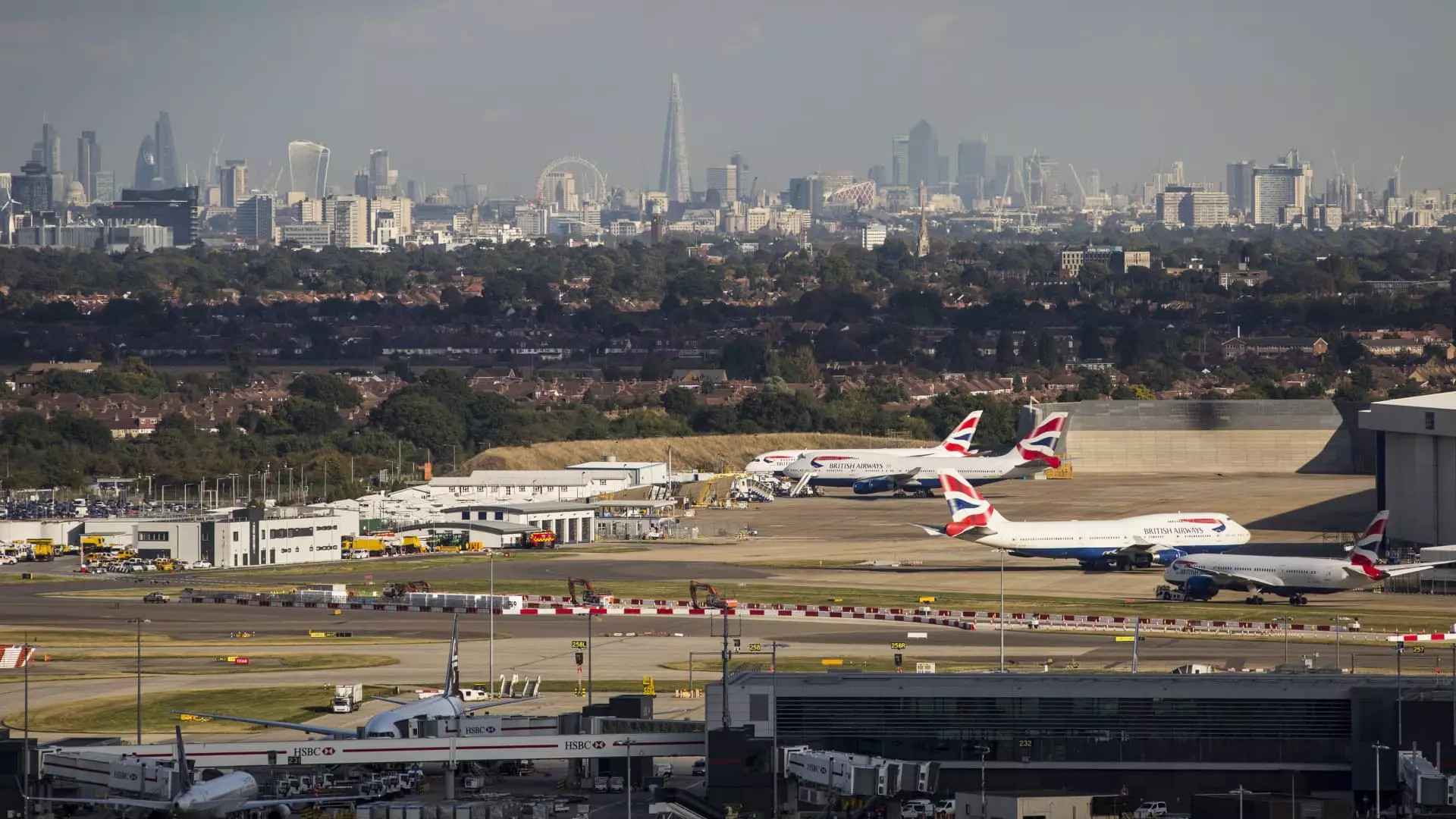As one of the busiest airports in Europe, Heathrow plays a pivotal role in connecting the U.K. with the rest of the world. However, airport executives, particularly Chief Executive Thomas Woldbye, have recently intensified discussions surrounding the urgent need for a third runway at the facility. The conversation gained momentum at the Airlines 2024 conference, where Woldbye articulated his commitment to advocating for a decisive government ruling on the runway by the end of 2025. This renewed focus on expansion comes as Heathrow grapples with soaring passenger numbers post-pandemic, highlighting the urgency of enhancing airport capacity.
Woldbye’s assertion that Heathrow is nearing its operational limits is particularly significant. With passenger figures climbing from 62 million in 2022 to 79 million in 2023, and a pre-pandemic record of 80.9 million in 2019, the need for additional capacity has never been clearer. The airport’s current operations are capped at 480,000 flights per year, a threshold that many argue compromises its ability to meet future demand. Woldbye emphasized, “If we want to go beyond a certain number at Heathrow…we need a third runway,” framing the necessity for expansion not merely as an operational concern but as an integral part of the broader U.K. economic strategy.
Despite Woldbye’s call for action, he acknowledged the ultimate authority lies with the U.K. government. The chief executive stated, “So the next thing is, how do we then realize that… We’ here is not just Heathrow,” illustrating that the decision to build a third runway is a collective responsibility shared between the airport, the airlines, and government bodies. The specter of extensive public consultation and legal scrutiny surrounding the expansion plans cannot be overlooked. Various stakeholders, including local residents and environmental advocates, have long expressed concerns about potential environmental degradation and increased traffic congestion should a third runway be constructed.
Even as Woldbye remains optimistic about the “positive momentum” under the current Labour administration, he acknowledged that the project poses a complex challenge, requiring a delicate balance between aviation needs and environmental commitments. Transport Secretary Louise Haigh echoed these sentiments, emphasizing that any airport expansion must align with the U.K.’s ambitious environmental objectives.
Opposition to the proposed runway expansion has remained steadfast, with environmental groups like Friends of the Earth actively campaigning against the plan. Their concerns center on the detrimental impact of increased greenhouse gas emissions, potential harm to local ecosystems, and additional noise pollution affecting nearby communities. The tension between economic growth and environmental protection highlights a significant challenge as runway discussions continue.
Legal battles have characterized the runway debate for almost two decades. In 2020, the U.K.’s Supreme Court overturned previous rulings that questioned the legality of the government’s approval process for the runway, taking into account the nation’s commitments under the Paris Agreement. This judicial backdrop illustrates the contentious nature of infrastructure projects in the U.K. amidst rising environmental awareness.
For the aviation sector, the expansion has long been viewed as a necessary step to mitigate competitive pressures. Airlines operating out of Heathrow have expressed discontent over soaring costs associated with securing flight slots. The anticipated third runway could serve as a vital resource to alleviate these challenges, enabling airlines to expand their operations and reduce overheads.
Woldbye articulated a critical point: should the government approve the expansion without public funding, Heathrow must present a well-rounded and financially viable proposal to its shareholders. This indicates an inherent tension; while demand is evident and growing, securing investment requires a clear articulation of long-term benefits amid economic uncertainties.
In the interim, Heathrow is focusing on maximizing efficiency across its existing infrastructure. Woldbye noted that the airport is actively developing a growth plan that does not solely rely on the addition of a third runway. This approach not only emphasizes adaptability but also underscores a commitment to high standards of operational efficiency while addressing concerns over sustainability.
The calls for a third runway at Heathrow encapsulate a broader debate surrounding infrastructure, economic growth, and environmental sustainability. The pathway ahead is fraught with challenges and opposition, yet the urgency voiced by Woldbye reflects an undeniable reality: the demand for increased air travel capacity is real and pressing. As negotiations continue and stakeholders weigh the merits of the proposed expansion, the future of Heathrow represents a critical juncture for the U.K.’s aviation landscape. The aviation industry, government, and communities will need to navigate this complex terrain thoughtfully, balancing ambition with responsibility as they determine the airport’s future.

